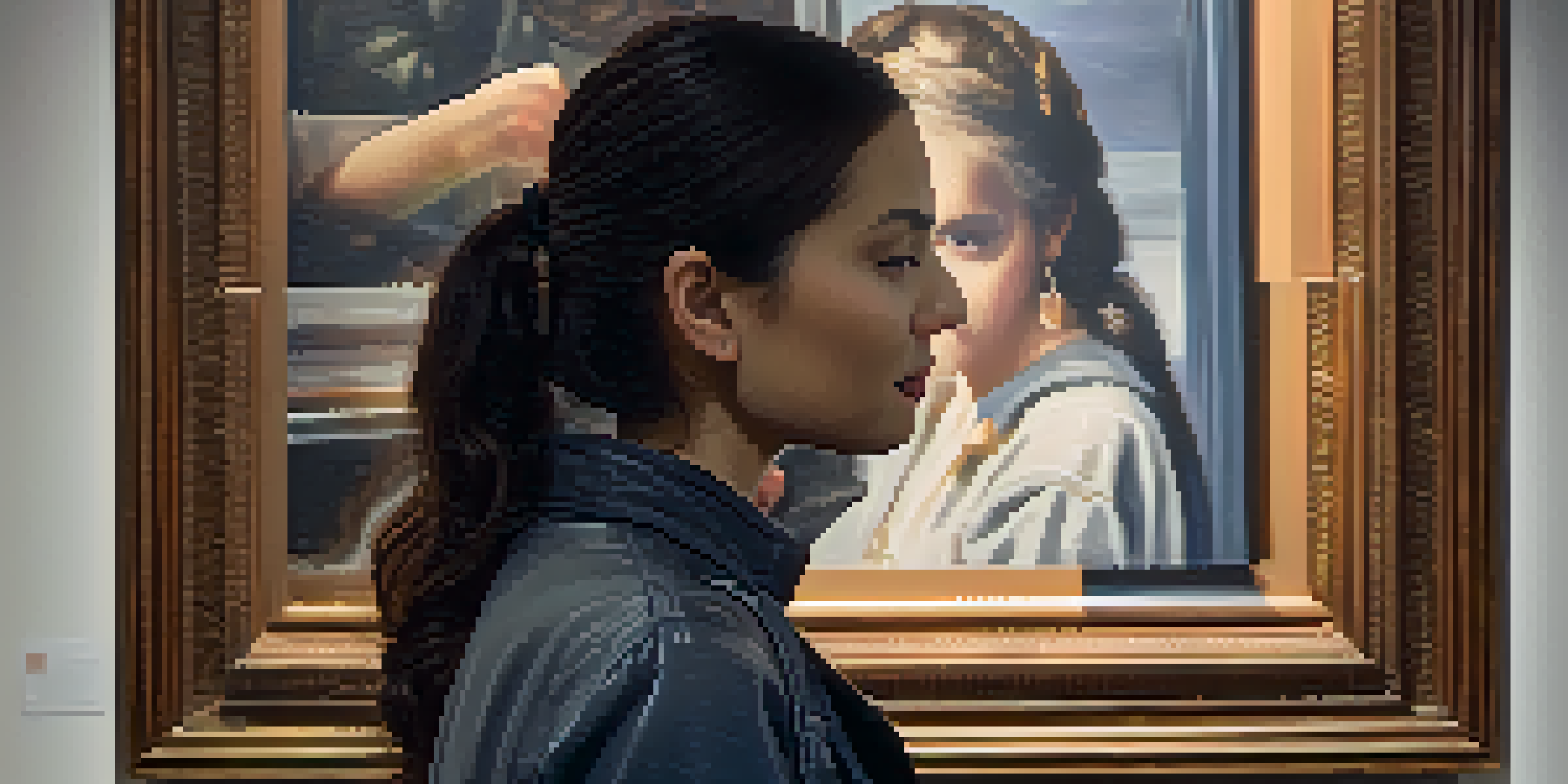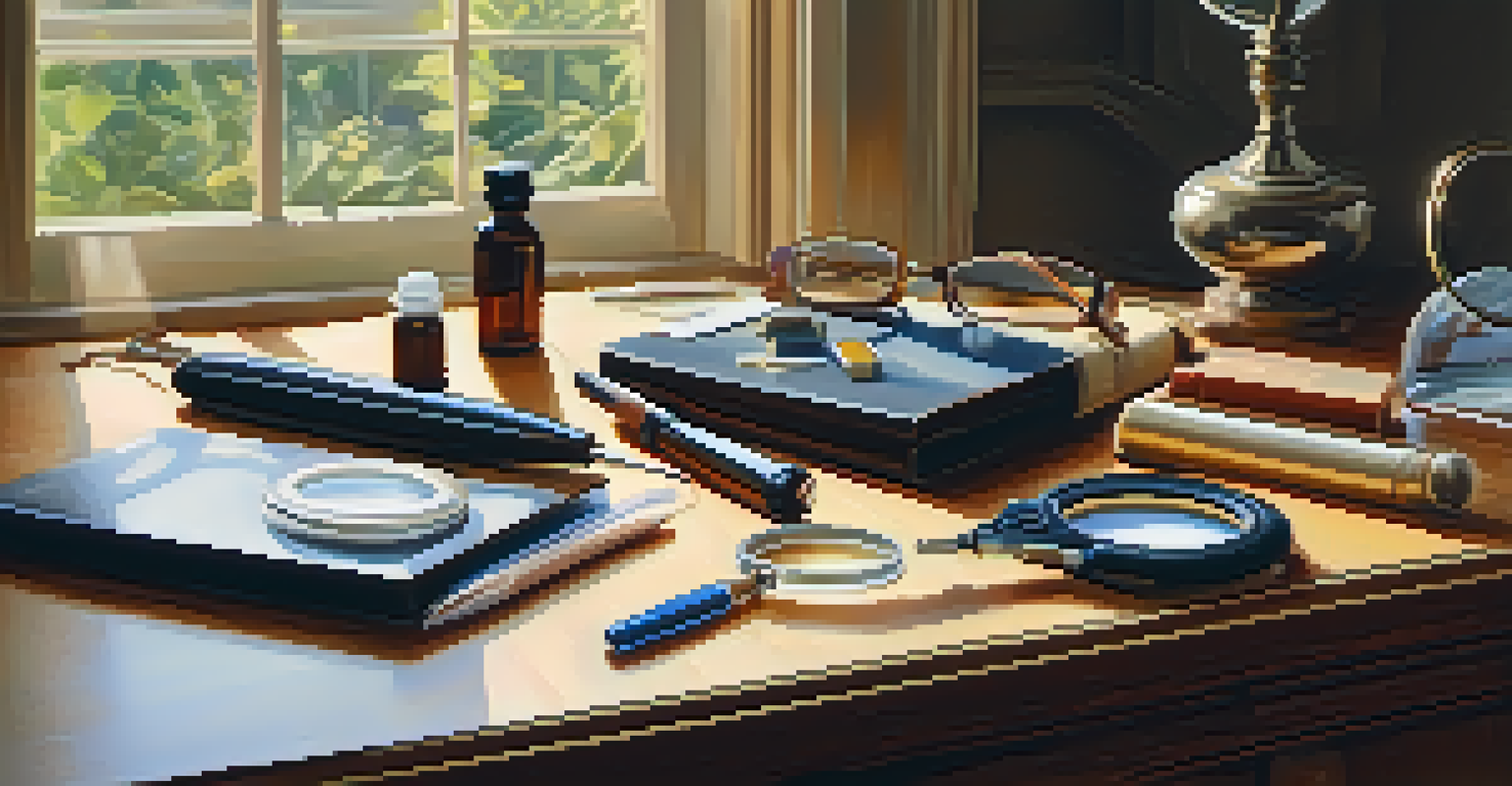Art Authentication: Protecting Value in the Marketplace

Understanding Art Authentication and Its Importance
Art authentication is the process of verifying the origin and authorship of a piece of art. This can be crucial for collectors, galleries, and investors who want to ensure that what they own is genuine. In an age where forgeries are becoming increasingly sophisticated, understanding the significance of authentication is vital for protecting one's investment.
The only thing worse than being blind is having sight but no vision.
Imagine buying a beautiful painting only to discover later that it’s a clever forgery. Not only would that be disheartening, but it could also mean a significant financial loss. Authenticating art helps avoid such pitfalls by providing assurance of the piece's value and authenticity.
Moreover, the art market thrives on trust and reputation. When art is properly authenticated, it boosts confidence among buyers and sellers alike, fostering a healthier marketplace where genuine works can shine.
The Process of Art Authentication Explained
Art authentication involves a meticulous evaluation of various factors including provenance, materials, and stylistic elements. Experts use scientific methods, historical research, and their knowledge of an artist’s style to ascertain the authenticity of a piece. This multi-faceted approach ensures that the final judgment is as accurate as possible.

For example, infrared reflectography can reveal underdrawings that are invisible to the naked eye, while chemical analysis can determine the age of the materials used. Such techniques not only authenticate the art but also provide fascinating insights into the artist's creative process.
Art Authentication Protects Investments
Verifying the authenticity of art is crucial for collectors to avoid financial losses from forgeries.
Ultimately, the goal is to establish a clear and confident identification of the artwork, which is essential for its value in the market. A thorough authentication process can significantly enhance a piece's worth and desirability among collectors.
The Role of Provenance in Art Authentication
Provenance refers to the history of ownership of a work of art, and it plays a critical role in authentication. A well-documented provenance can significantly enhance an artwork's value and credibility. It tells the story of the piece, from its creation to its current ownership, and can often provide essential clues as to its authenticity.
Art is the most beautiful of all lies.
For instance, if a painting was owned by a renowned collector or featured in a prestigious exhibition, it adds layers of legitimacy to its status. Conversely, a lack of provenance can raise red flags, making potential buyers wary and skeptical about the artwork's authenticity.
Thus, provenance not only helps in authentication but also impacts the market value of art. Collectors should always seek detailed provenance records when considering a purchase to safeguard their investment.
Challenges in Art Authentication Today
Despite advancements in technology, art authentication faces several challenges. The rise of digital art and NFTs has introduced a new layer of complexity, requiring different approaches to ensure authenticity. Traditional methods may not always apply, leading to confusion and skepticism in the market.
Additionally, with the increasing sophistication of forgers, distinguishing a genuine piece from a replica has become more challenging. As techniques improve, so does the ability to create convincing forgeries, making it essential for experts to stay updated on the latest advancements in authentication methods.
Provenance Boosts Art Value
A well-documented history of ownership enhances an artwork's credibility and market value.
These challenges highlight the need for continued vigilance in the art world. Collectors and investors must remain informed and work with reputable experts to navigate the complexities of art authentication.
The Impact of Technology on Art Authentication
Technology is revolutionizing art authentication by providing new tools and methods for verification. Techniques such as X-ray fluorescence, UV light analysis, and digital imaging allow experts to examine artworks in ways previously thought impossible. These innovations can reveal hidden details and provide substantial evidence of authenticity.
For instance, using imaging technology can uncover layers of paint that the artist applied, offering insights into their technique and helping to confirm or dispute authorship. Such high-tech tools not only make the authentication process more accurate but also more efficient, saving time and resources.
As technology continues to evolve, it promises to bring even more advancements in the field of art authentication. This ongoing evolution will be crucial for maintaining integrity and trust in the ever-changing art marketplace.
Why Buyers Should Prioritize Authentication
For art buyers, prioritizing authentication is essential for safeguarding their investment. Purchasing art without proper authentication can lead to significant financial losses, as the value of a forgery is typically negligible compared to an original. Therefore, ensuring that a piece is authenticated can save buyers from heartbreak and financial hardship.
Moreover, authenticated artworks are often accompanied by certificates or documentation that can facilitate resale in the future. Buyers who choose to invest in authenticated pieces have a better chance of recouping their investment or even making a profit when it’s time to sell.
Technology Enhances Authentication
Innovative tools like digital imaging and X-ray fluorescence improve the accuracy and efficiency of art authentication.
Ultimately, buyers shouldn’t just consider the aesthetic appeal of art but also its authenticity. Investing in genuine artworks contributes to a vibrant and trustworthy art market.
Final Thoughts on Art Authentication for Collectors
Art authentication is an integral part of the art market that helps protect value and integrity. As a collector or investor, understanding the importance of proper authentication can make all the difference in your art journey. From avoiding forgeries to enhancing the value of your collection, authentication plays a key role in the art world.
By educating themselves about authentication processes and seeking expert advice, collectors can confidently navigate the art marketplace. This proactive approach not only protects their investments but also enriches their appreciation of art.

In conclusion, art authentication is not just a technical process; it’s a vital component of art collecting that ensures the preservation of artistic integrity and value in the marketplace.